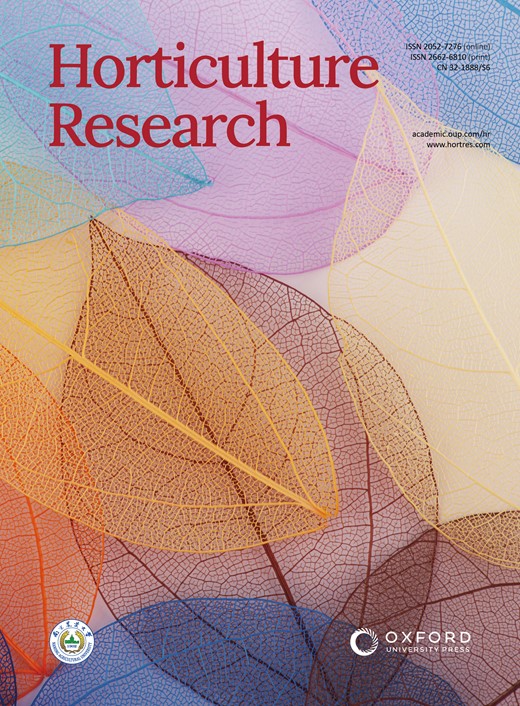对东亚蓖麻属植物进化和地方适应性的新认识
IF 8.7
1区 农林科学
Q1 Agricultural and Biological Sciences
引用次数: 0
摘要
栗属植物(Castanea)是全世界重要的坚果果树。然而,人们对该属不同物种的遗传关系和进化历史知之甚少。现代板栗植物是如何发展出适应各种气候的地方性适应性的,仍然是一个谜。基因组数据显示,Castanea henryi 在距今约 3156 万年前的渐新世首次分化,随后是 Castanea mollissima,Castanea seguinii 和 Castanea crenata 在中新世中期分化。在过去的 500 万年中,栗属植物的数量持续下降。为了研究板栗适应不同气候的基因组基础,我们结合了选择性扫描和环境关联研究。22个候选基因与温度和降水有关。我们还揭示了CmTOE1与CmZFP8和CmGIS3相互作用促进非腺毛形成以适应低温和高海拔的分子机制。我们在中国板栗中发现了 CER1 基因的显著扩增,并验证了 CmERF48 对 CmCER1.6 适应干旱环境的调控。这些结果揭示了东亚板栗植物是一个在中新世完成了种间分化的单系群,并为今后坚果类植物适应气候变化的候选基因研究增添了新的内容。本文章由计算机程序翻译,如有差异,请以英文原文为准。
New insights into the evolution and local adaptation of the genus Castanea in East Asia
Chestnut plants (Castanea) are important nut fruit trees worldwide. However, little is known regarding the genetic relationship and evolutionary history of different species within the genus. How modern chestnut plants have developed local adaptation to various climates remains a mystery. The genomic data showed that Castanea henryi first diverged in the Oligocene at about 31.56 Million years ago, followed by Castanea mollissima, the divergence between Castanea seguinii and Castanea crenata in the mid-Miocene. Over the last 5 million years, the population of chestnut plants has continued to decline. A combination of selective sweep and environmental association studies was applied to investigate the genomic basis of chestnut adaptation to different climates. 22 candidate genes were associated with temperature and precipitation. We also revealed the molecular mechanism by which CmTOE1 interact with CmZFP8 and CmGIS3 to promote the formation of non-glandular trichomes for adaptation to low temperature and high altitudes. We found a significant expansion of CER1 genes in Chinese chestnut and verified the CmERF48 regulation of CmCER1.6 adaptation to drought environments. These results shed light on the East Asian chestnut plants as a monophyletic group that had completed interspecific differentiation in the Miocene and added candidate gene studies on adaptation to climate change for future studies in nut trees.
求助全文
通过发布文献求助,成功后即可免费获取论文全文。
去求助
来源期刊

Horticulture Research
Biochemistry, Genetics and Molecular Biology-Biochemistry
CiteScore
11.20
自引率
6.90%
发文量
367
审稿时长
20 weeks
期刊介绍:
Horticulture Research, an open access journal affiliated with Nanjing Agricultural University, has achieved the prestigious ranking of number one in the Horticulture category of the Journal Citation Reports ™ from Clarivate, 2022. As a leading publication in the field, the journal is dedicated to disseminating original research articles, comprehensive reviews, insightful perspectives, thought-provoking comments, and valuable correspondence articles and letters to the editor. Its scope encompasses all vital aspects of horticultural plants and disciplines, such as biotechnology, breeding, cellular and molecular biology, evolution, genetics, inter-species interactions, physiology, and the origination and domestication of crops.
 求助内容:
求助内容: 应助结果提醒方式:
应助结果提醒方式:


